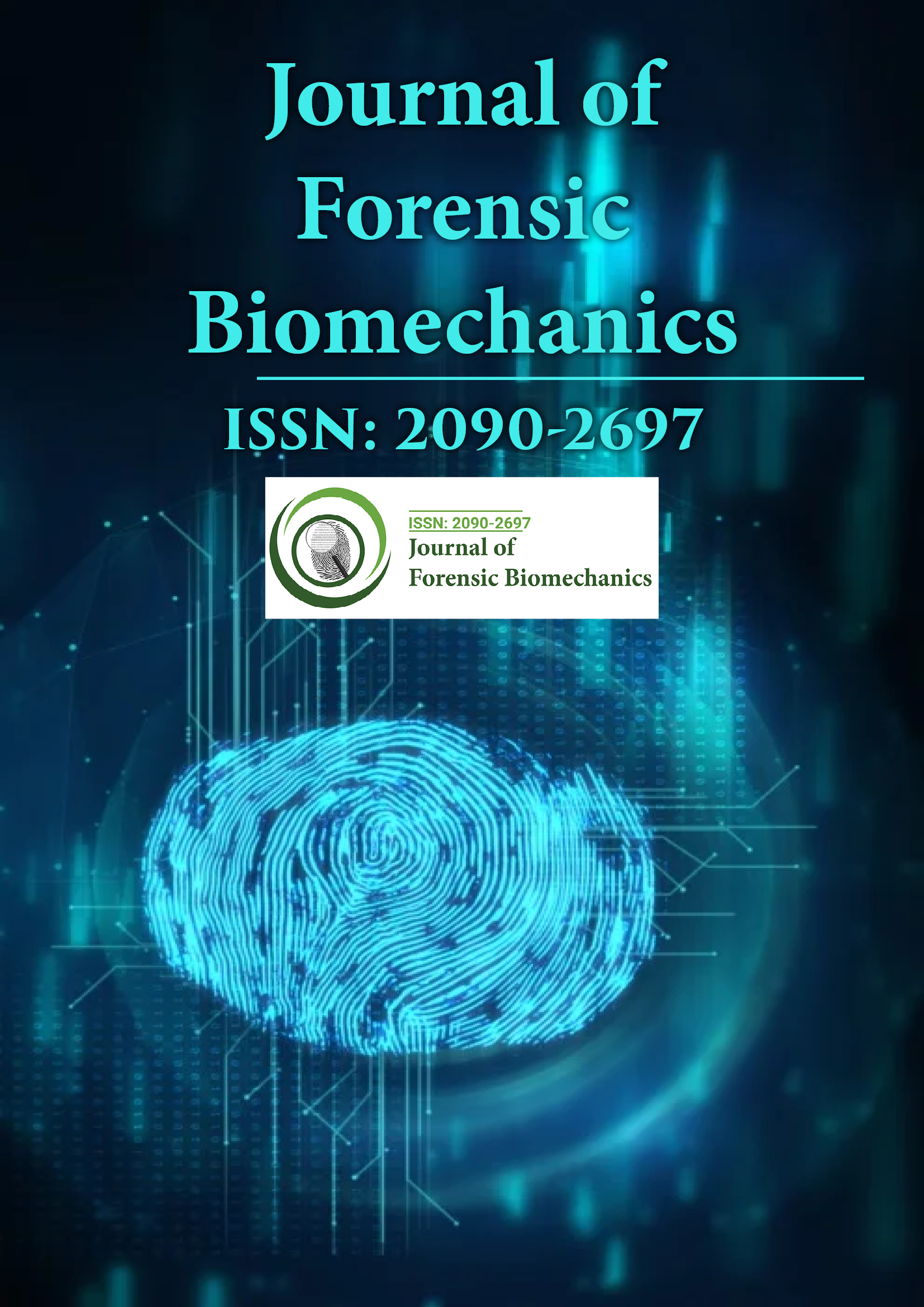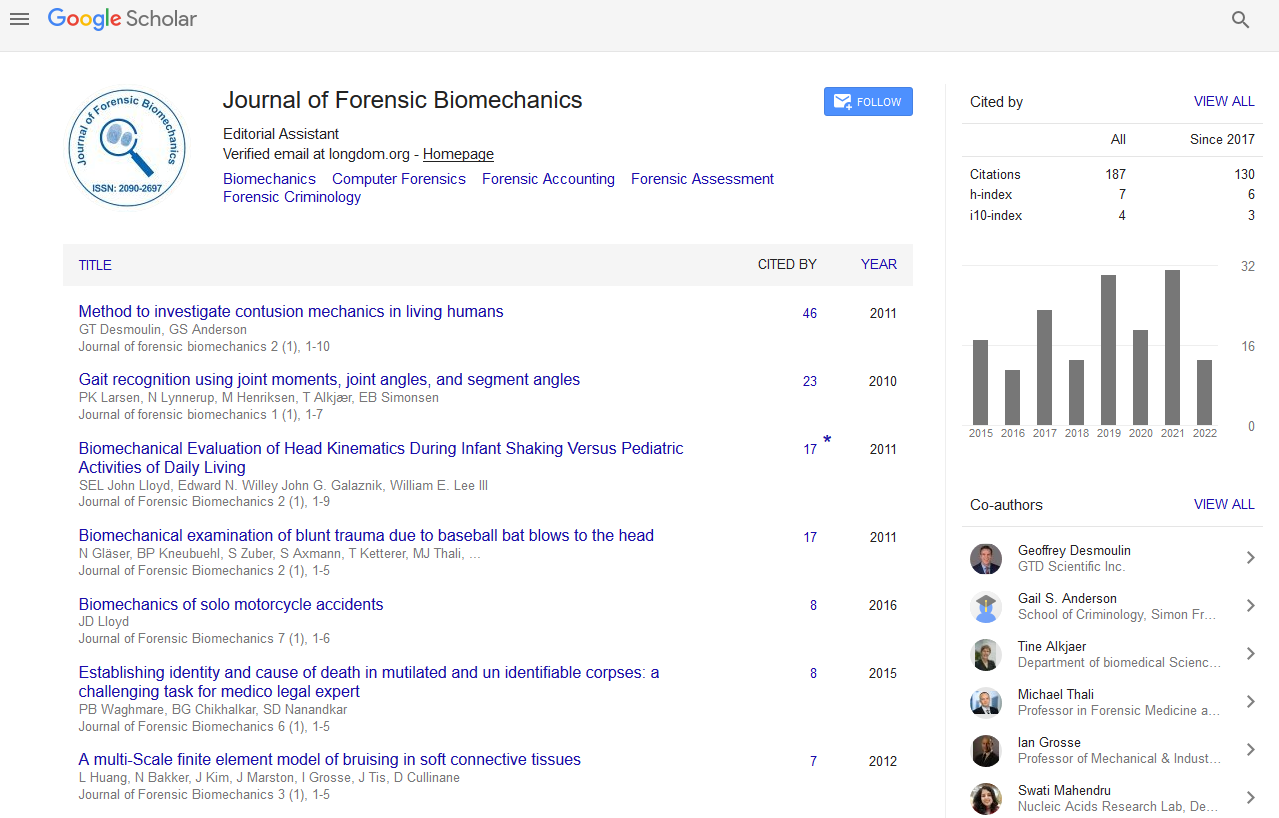Indexed In
- Genamics JournalSeek
- SafetyLit
- Ulrich's Periodicals Directory
- RefSeek
- Hamdard University
- EBSCO A-Z
- Geneva Foundation for Medical Education and Research
- Euro Pub
- Google Scholar
Useful Links
Share This Page
Journal Flyer

Open Access Journals
- Agri and Aquaculture
- Biochemistry
- Bioinformatics & Systems Biology
- Business & Management
- Chemistry
- Clinical Sciences
- Engineering
- Food & Nutrition
- General Science
- Genetics & Molecular Biology
- Immunology & Microbiology
- Medical Sciences
- Neuroscience & Psychology
- Nursing & Health Care
- Pharmaceutical Sciences
Opinion Article - (2022) Volume 13, Issue 5
Potential Technology of Forensic Palynology used at Crime Scenes and Criminal Cases
Laurence Carrion*Received: 29-Aug-2022, Manuscript No. JFB-22-18534; Editor assigned: 01-Sep-2022, Pre QC No. JFB-22-18534 (PQ); Reviewed: 15-Sep-2022, QC No. JFB-22-18534; Revised: 22-Sep-2022, Manuscript No. JFB-22-18534 (R); Published: 29-Sep-2022, DOI: 10.35248/2090-2697.22.13.408
About the Study
Forensic palynology is a subfield of palynology (the study of pollen grains, spores, etc.) that proves or refutes relationships between objects, persons, and places that may be relevant in both criminal and civil cases. The purpose is that pollen can reveal where people and things have been because different parts of the world, countries and even gardens have unique collections of pollen. Pollen records can also indicate when a particular object picked up pollen. Forensic palynology has been a law enforcement tool for over 50 years. Forensic palynology is the use of pollen and spores to solve civil or criminal matters. Pollen and spores can be obtained from a wide variety of objects, including the human body. Pollen and spores provide clues as to the origin of matter and the nature of the environment from which the material originated. Their utility lies in a combination of abundance, dispersal mechanism, resistance to mechanical and chemical disruption, microscopic size, and morphology. Their often complex morphology allows the identification of single taxa of parent plants that can be assigned to specific ecological habitats or scenes. Accumulations of pollen and spores characterize a wide variety of environments and locations and can be easily picked up and carried away from a location of interest without giving the suspect any visual clues as to what happened.
Pollen and spores are too small (7-200 m) to be seen with the naked eye, so criminals rarely realize they have collected them from a crime scene. They stick to most surfaces and penetrate deep into clothing. This means that washing with detergent will not remove all sand. Pollen is also resistant to degradation by cell walls composed of cellulose and sporo pollenin. It is one of the most chemically resistant organic molecules known. Pollen refers to the powder containing the male gametophyte of a seedproducing plant that is produced and expelled for pollination and reproduction. Pollen grains may spread in several ways. Aerobic plants produce pollen that is carried by the wind. Pollen typically falls within about 2 km of the mother plant, but the extent of migration depends on many factors, including wind strength and direction, grain weight and shape, and atmospheric conditions. Pollen produced by water-game plants is carried by water, whereas zoophytes use animals such as bees, birds, and rodents to disperse pollen. Once the pollen reaches a suitable plant, it can germinate (making a plant out of the seed). Pollen grains are relatively resistant to destruction as they usually have fairly hard shells that protect them as they move from one plant to another.
The first recorded case of police using pollen to solve a crime was in Austria in 1959. Hay fever samples can be obtained from a variety of sources, such as clothing, hair, and even nasal passages, car tires, car air filters, objects, and mud. By the dispersal mechanism of some plants, pollen has been used in many types of cases since 1959, including missing persons, robberies, drug trafficking, and even private murders. For example, pollen can be used to solve crimes. Since each plant species produces a unique pollen grain, investigators can locate a suspect at a crime scene by matching the types of pollen found on the suspect's clothing with the species of flowering plants present at the crime scene. In many cases, pollen and nectar appear to deter, harm or kill pollinators. To extract, identify, and count samples of fossil pollen grains contained in strata.
Citation: Carrion L (2022) Potential Technology of Forensic Palynology used at Crime Scenes and Criminal Cases. J Forensic Biomech.13:408.
Copyright: © 2022 Carrion L. This is an open-access article distributed under the terms of the Creative Commons Attribution License, which permits unrestricted use, distribution, and reproduction in any medium, provided the original author and source are credited.

